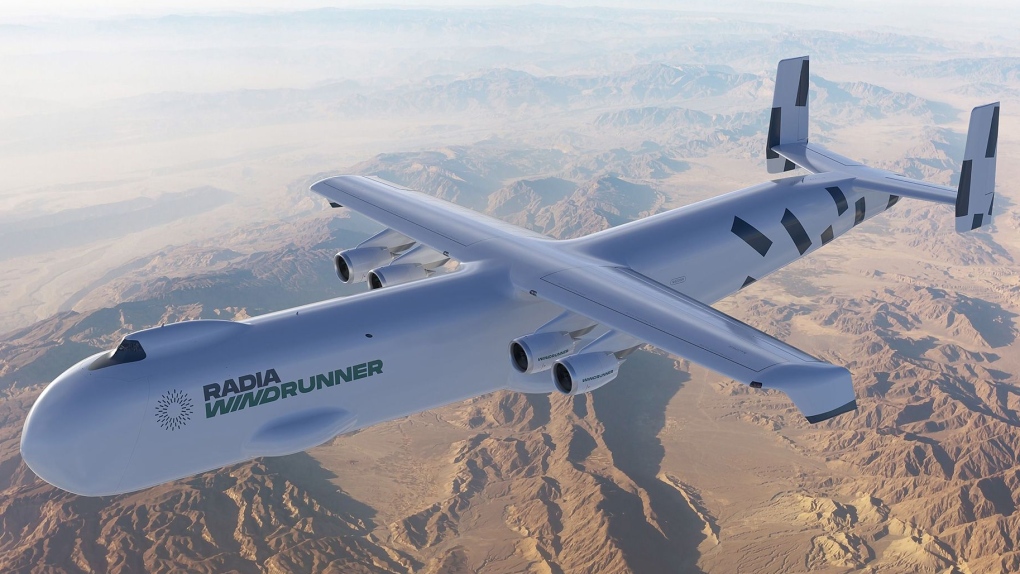There’s a global energy crisis and onshore wind farms are a potential growth option. Larger wind turbines produce more power than standard ones, but the components are too big to be transported by road.
What’s the solution? A Colorado-based energy startup named Radia has an idea. It’s developing the biggest aircraft in aviation history.
Meet the WindRunner airplane, whose mission will be to deliver gigantic 300-foot-long blades directly to wind farms.
To help the world meet its decarbonization targets, it’ll use sustainable aviation fuel and needs only a simple packed-dirt or gravel runway to land on.
It’ll operate from regional hubs, says Radia, delivering where needed – and “can land on airstrips as short as 6,000 feet (1,800 metres), something no other large commercial aircraft can achieve.”
Let’s talk about specs, baby
When it comes to carrying the largest payloads ever moved by air, dainty just isn’t going to cut it.
So WindRunner will have a cargo bay volume of 272,000 cubic feet, enough to hold three Olympic swimming pools. That’s 12 times the volume of a Boeing 747-400 and – at 356 feet in length, it’s 127 feet longer too.
As for the wingspan, that’s 261 feet – imagine four bowling lanes laid end to end.
It will also dwarf the Antonov An-225, the heaviest aircraft ever built, which was destroyed at the start of Russia’s invasion of Ukraine.
The aircraft’s scale might be groundbreaking, but the engineering is not – and that’s by design. Radia says it’s focusing “on existing technology and safety by using, where applicable, tried-and-true aviation materials, components and fabrication techniques that have FAA [U.S. Federal Aviation Administration] approval, are already in mass production and are lowest-risk.”
The idea is to hit the ground running with a fast, well-built fleet that meets aerospace industry standards. Online reports say commercial operations as soon as 2027, but there’s no timeline confirmed on Radia’s website. CNN has reached out to the company for comment.
Where do the pilots go? Right up top. (Radia via CNN Newsource)
There she blows
Radia is banking on research organisation Bloomberg NEF’s estimation that up to US$10 trillion will be spent on onshore wind through 2050. The development of WindRunner is to enable GigaWind, the XXL turbines made by Radia’s partners, which include five of the world’s top six turbine manufacturers.
Currently, turbine blades today are ordinarily 230 feet or less (70 metres), but Radia wants to deploy blades of up to 104 meters (341 feet). The company says GigaWind turbines could potentially be two to three times more powerful – and two to three times more profitable than those typically deployed today.
So who are the folks behind these ambitious claims? The founder and CEO is Mark Lundstrum, a cross-industry entrepreneur and MIT aerospace engineer who founded Radia in 2016. The company says its team of advisers include former top brass from Boeing, MIT, Rolls-Royce and the FAA, as well as former US Secretary of Energy Ernest Moniz and former Prime Minister of Australia Malcolm Turnbull.
It’s an impressive lineup and the decision to focus on safe, existing technology is a smart one. Might we see a WindRunner take off before the end of the decade? Could its distinctive shape one day be as popular as the Beluga XL transporter planes created by Airbus? Watch the skies.




